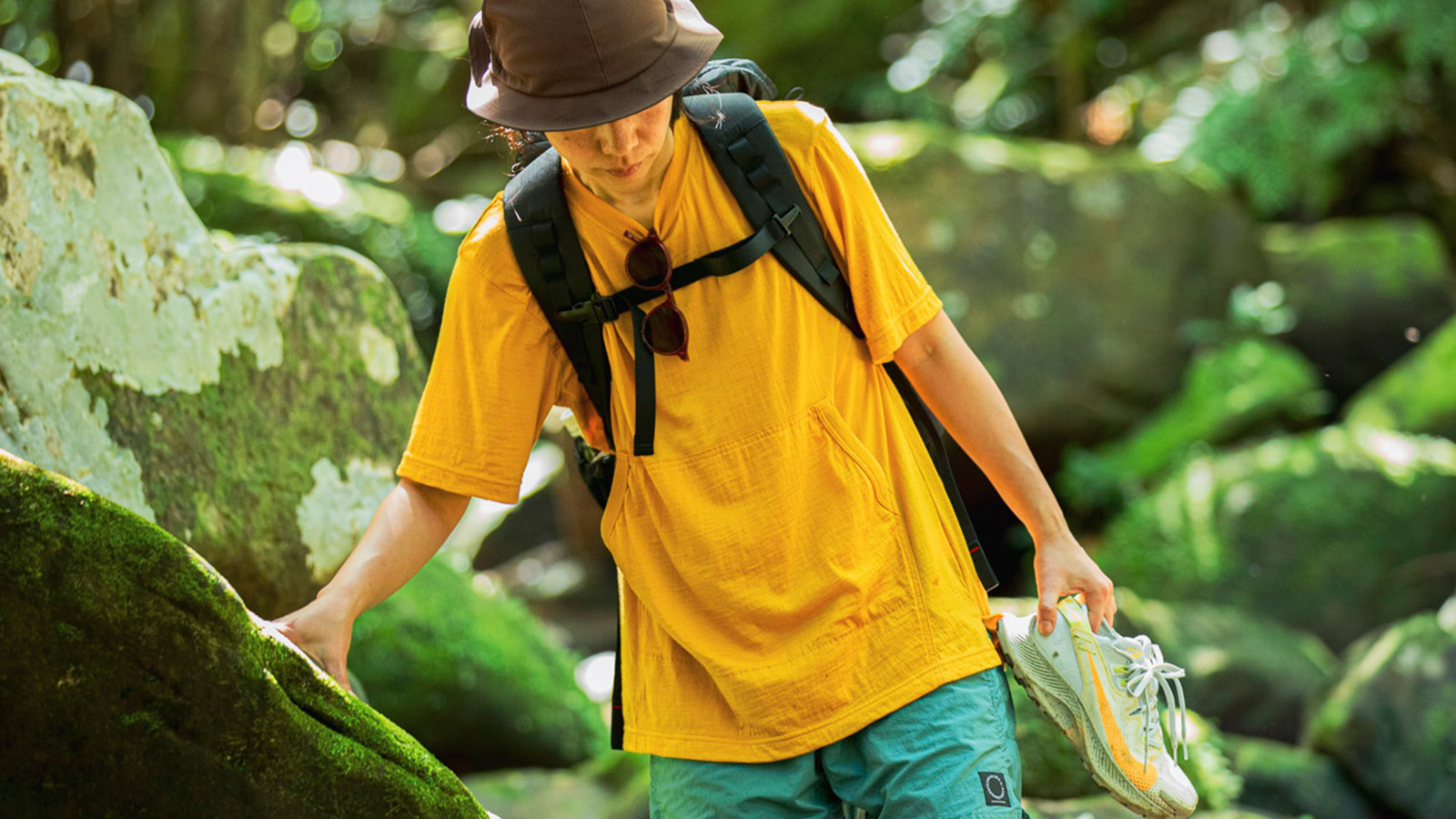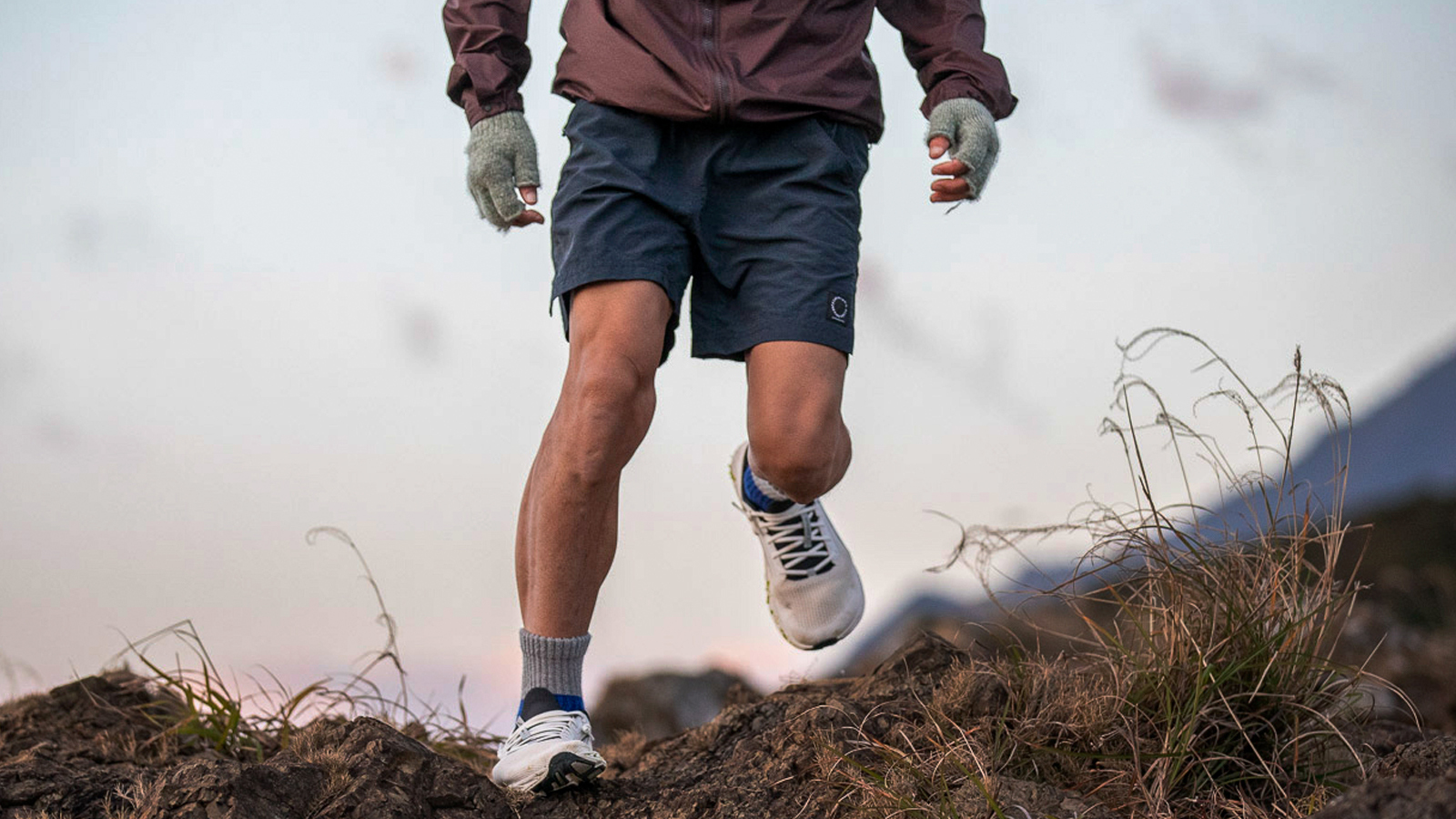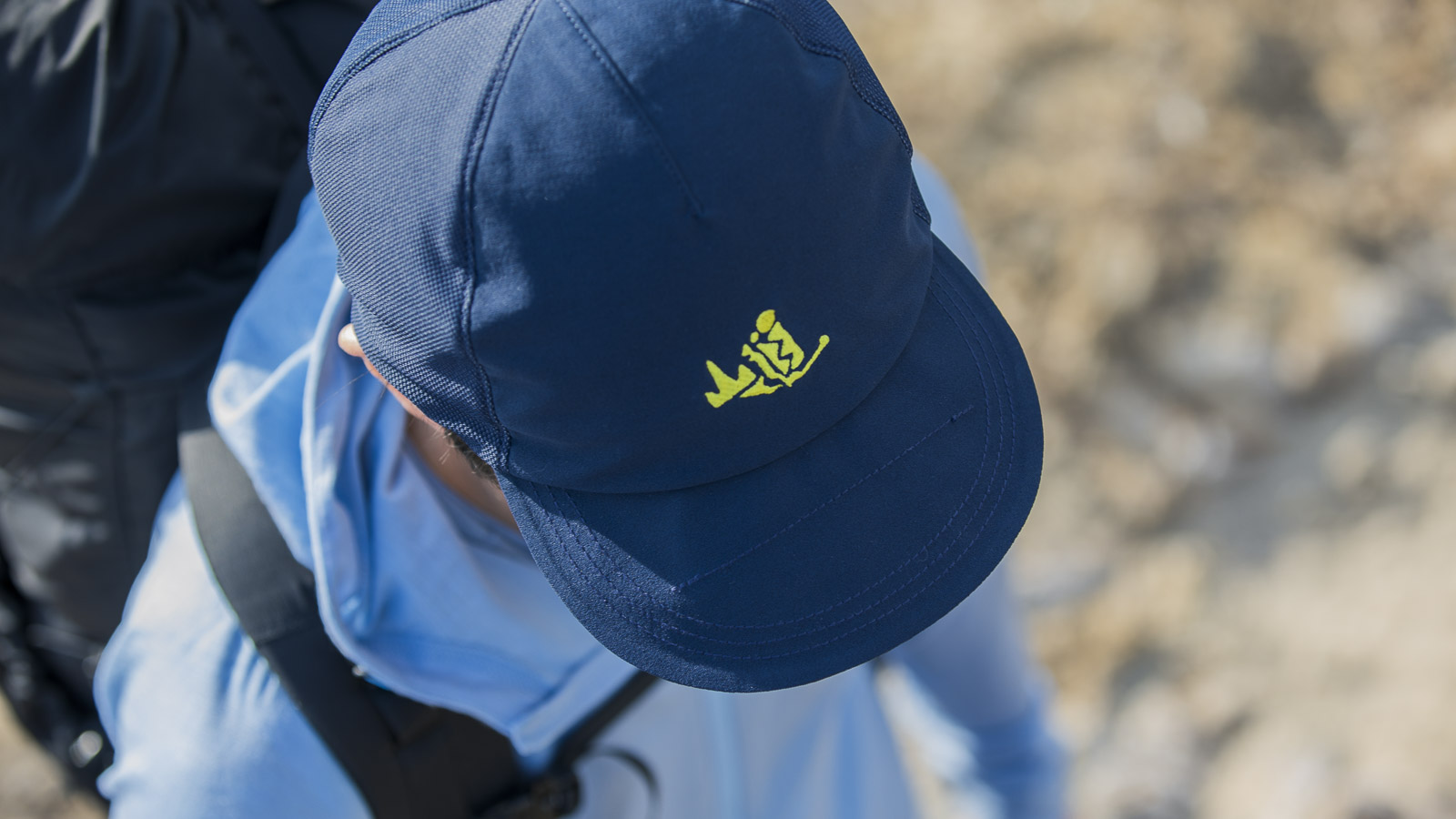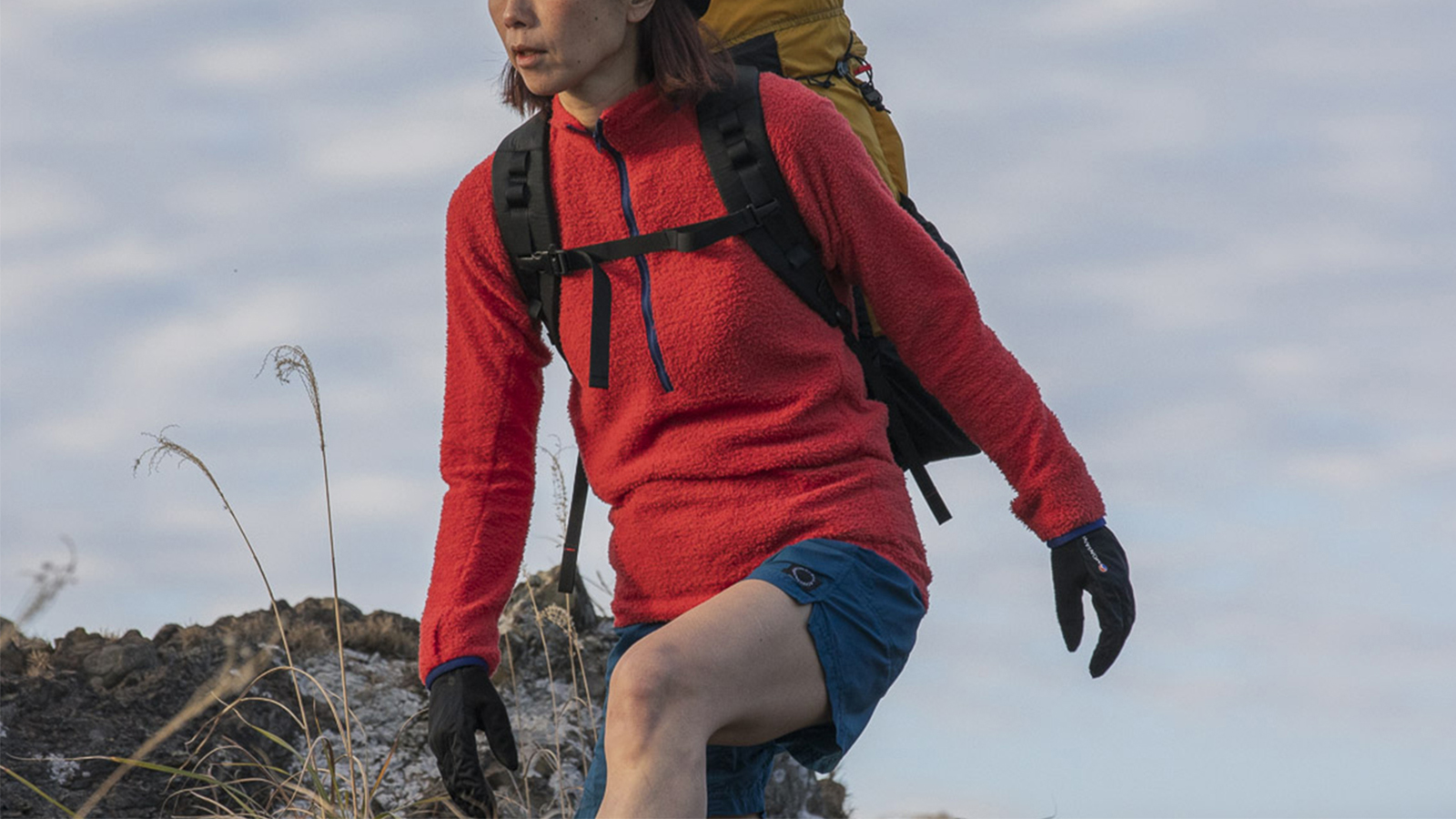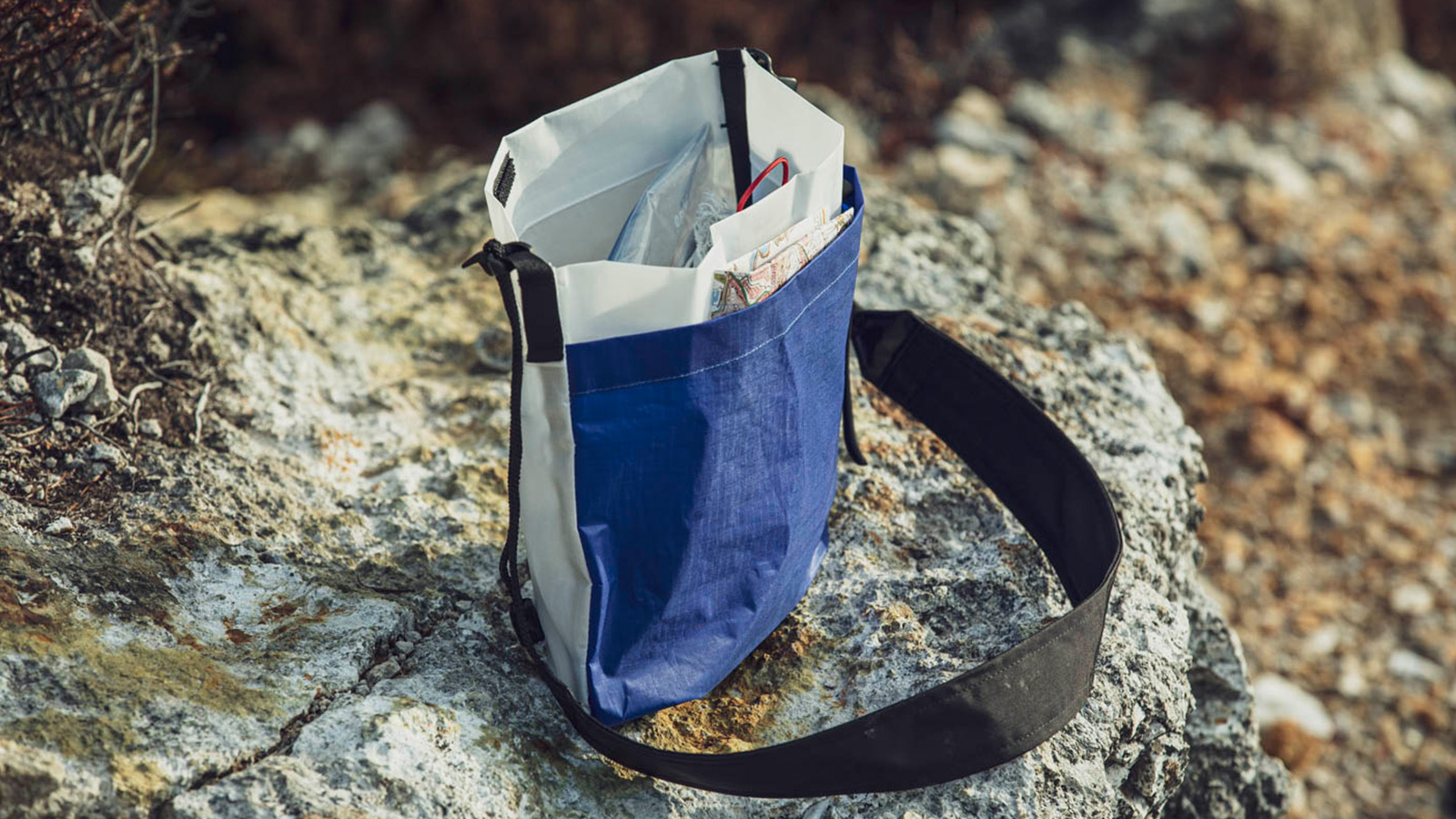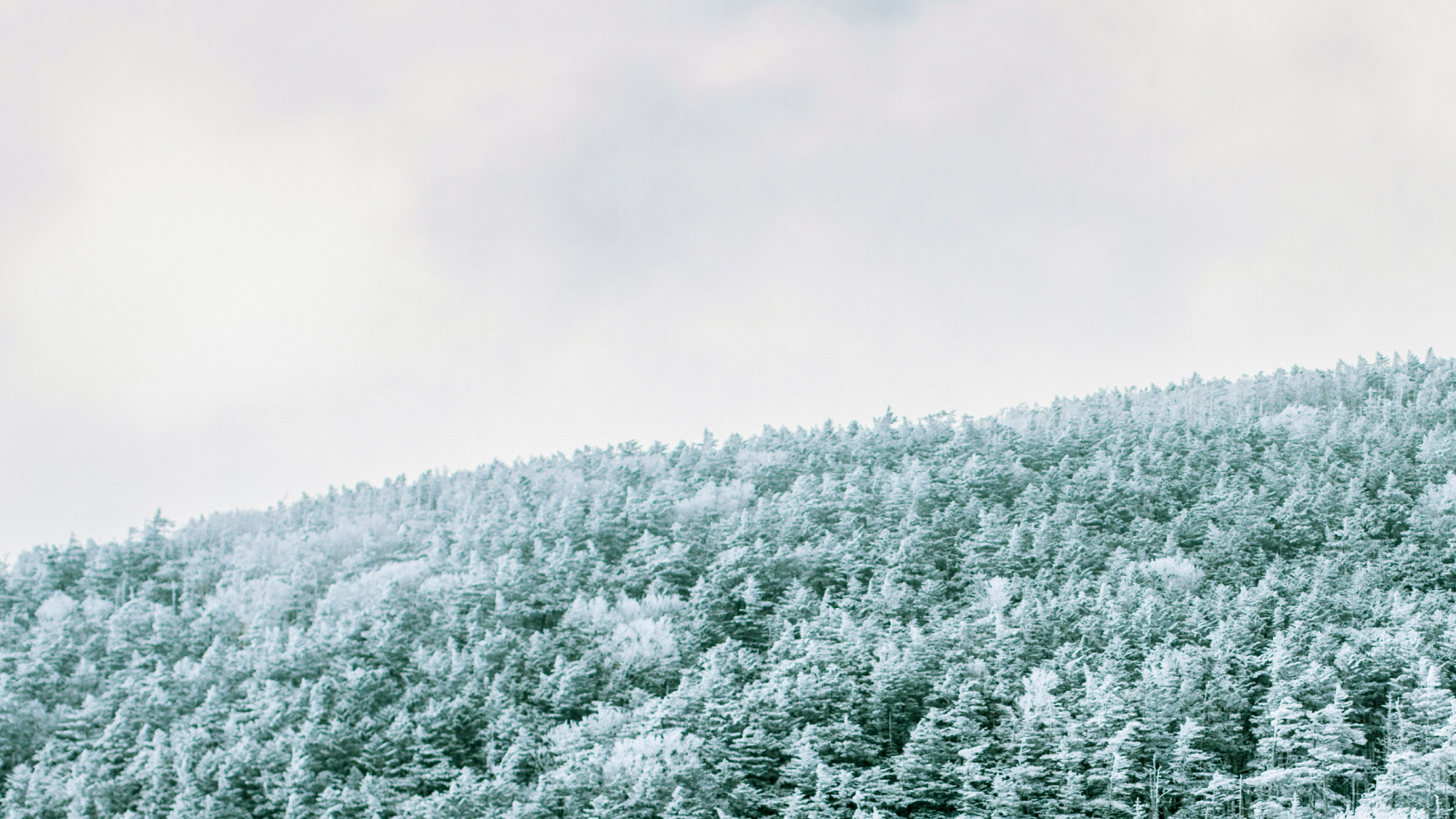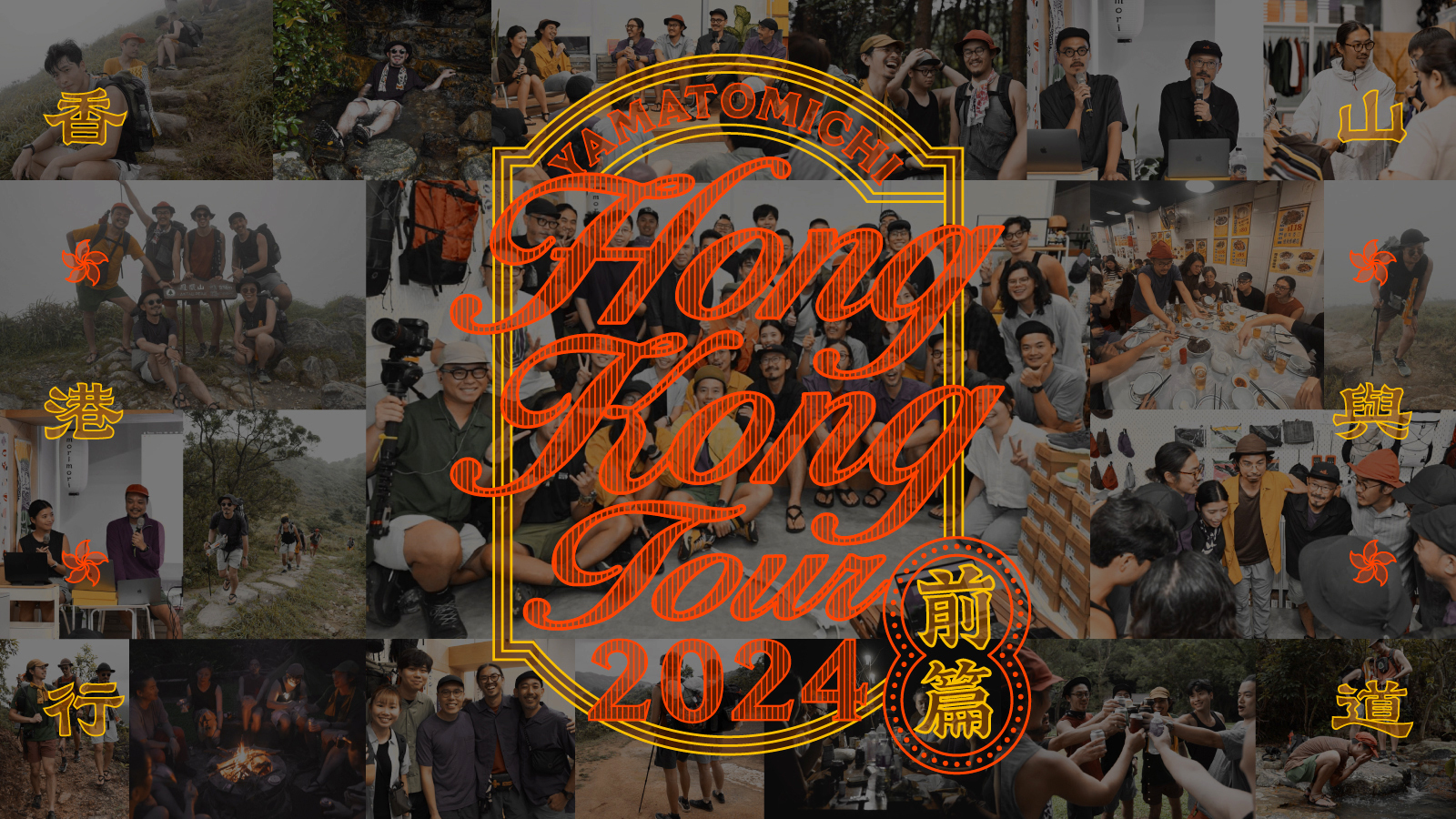Hiking the Lantau Trail #1
Photography: Masaaki Mita, Donald Yang
Hiking the Lantau Trail #1
Photography: Masaaki Mita, Donald Yang
In June 2024, we held a pop-up event in Hong Kong, hosted at ultralight gear shop, Morimori.
Our staff had meaningful interactions with local hikers, making the journey a truly fulfilling experience.
Staff members; Mita, George, JK, Kim, and founder Akira gathered in roundtable discussion style to reflect on the memorable trip.
In this first part of the report, we’ll take you along on a hike through one of Hong Kong’s iconic trails, the 70-kilometer Lantau Trail.
Enjoy the photos and videos capturing Hong Kong’s intense heat!
Back to Hong Kong: a five-year reunion
Mita: Thank you all for making time for this. Let’s get right into it. Joining me are Akira, our founder; staff members Kim and JK; George, the manager of our Kyoto store; and myself, Mita, the editor-in-chief of Yamatomichi Journal.

The Hong Kong expedition team: back row, from left to right—Mita, Kim, JK, and George. Front row—Akira on the left. Tsunoda, on the right, couldn’t join the roundtable due to scheduling conflicts.
Kim: This time, we went to Hong Kong to host a Yamatomichi pop-up shop and talk event at Morimori, a select shop specializing in UL hiking gear.
Mita: Five years ago, we held the HIKE / LIFE / COMMUNITY event at The Cave by Mother Outdoor Lifestyle, which has since closed. That event eventually inspired what became Yamatomichi HLC. The shop Morimori, where we hosted this recent event, was actually started by Donald, a Hong Kong hiker we met back then.
JK: After that, Donald visited Kamakura a few times and even came to our first Yamatomichi Festival!

HIKE / LIFE / COMMUNITY event at The Cave by Mother Outdoor Lifestyle.

Akira and Hong Kong hikers.

Camping trip with Hong Kong hikers.

A snapshot from breakfast after the camping trip. In the front row on the left is Donald from Morimori.
Mita: What motivated you to hold a pop-up at Morimori this time, Akira?
Akira: I’ve known Donald for over five years, as we were just talking about, and we’ve had many conversations over the years. When I heard he was opening a shop, I felt it was something I had to visit at some point. He also reached out to discuss carrying Yamatomichi products, but I wanted to experience Morimori firsthand and connect with the customers there, so I decided to do a pop-up.
Mita: The plan was to visit Morimori first and then decide on product distribution, right? Hong Kong already has a strong base of Yamatomichi users, and I got the impression that there’s significant interest—something I also felt five years ago. But now, it seems that interest has both expanded and deepened even further.

Mita: Everyone except George had visited Hong Kong five years ago. What were your impressions of Hong Kong after being away for so long?
JK: First off, I remember it being incredibly humid (laughs). That’s probably what sticks with me the most. Overall, though, I felt even more connected to the local community this time. The people were wonderful—both the Morimori staff and the visitors who gathered there.
Kim: For me, the highlight was actually getting to hike Hong Kong’s trails. We did some camping five years ago, but this time, we were able to experience the trails more directly.
Mita: Right, before the pop-up event, Donald took us on a proper one-night, two-day hike, which was our first time really hiking there.
JK: I’m glad we did that hike beforehand—it made a huge difference.
Mita George, this was your first time traveling abroad. What were your initial impressions when you arrived in Hong Kong?

George: I thought I’d experience more culture shock, but I work at the Kyoto store, which often has international visitors, so it didn’t feel all that different from usual. Even though it was my first time abroad, I surprisingly felt right at home. The people were friendly, and I didn’t feel tense or out of place at all.
Kim: That might also be because you didn’t go alone from Kansai Airport—you came to Tokyo first, and we all traveled together (laughs).
George: Yes, I’m really grateful to everyone for that (laughs).
From the airport to the trails in minutes
Mita: So we arrived in Hong Kong, and right from the first day, we met up with the Hong Kong team and headed straight to the trails.
Kim: Yeah, I remember we took a taxi for about 20-30 minutes from the airport to Mui Wo, a port town on Lantau Island, which is right by the trailhead.
Mita: Even while we were in the taxi, the roads had steep inclines and declines that you rarely see in Japan, which reminded me of Hong Kong’s rugged terrain. From Hong Kong, we had Donald, Andy, and Wilson from Morimori join us, along with two cameramen, Meng and Lok. Everyone was really great. Andy had an injured leg, so he couldn’t hike with us, but he helped deliver supplies and provided other support.
JK: They were truly wonderful people.
Akira: It was great to see the Morimori staff working together to support Donald. You could feel the team spirit they shared.
Mita: First, we stocked up on food at a supermarket right next to the trailhead. What were your impressions of the supermarket in Hong Kong?
JK: I was surprised by how many Japanese products they had—it was more than I expected.


Mita: It seemed like every aisle had a Japanese section. Since Hong Kong is relatively small and doesn’t produce much locally, there’s a lot of Japanese, Korean, and Chinese products on the shelves.
Akira: I was thrilled to find “Young Master,” my favorite Hong Kong craft beer.
JK: Your excitement when you found it was something else (laughs).
Mita: So, we started walking from the trailhead, which was just a short walk from the supermarket, and it was unbelievably hot. Right from the start, I was a bit worried about how it would go.
JK: I was sweating so much that I didn’t need to use the restroom the whole way.
Kim: I remember thinking, “If this heat keeps up, we might be in trouble.”

Mita: On the first day, we started hiking in the early afternoon with about two hours on the trail, and even that left us drenched in sweat. I often say, “If you’re going UL, just wear merino, and you won’t need a change of clothes,” but with that kind of heat and humidity, I thought, “Yeah, I’m definitely going to need a change of clothes” (laughs).
George: I’m used to the intense, humidity in Kyoto, but this was beyond what I expected. Coming back, I realized that even Kyoto’s summer can’t compare to Hong Kong’s humidity.
Mita: June is apparently one of the hottest months in Hong Kong. Everyone was saying we should come in January or December next time. So, on the first day, we followed a route from the port along the coast, aiming for a campsite by the end of the day.

Kim: The trail was well-maintained and easy to walk on.
Mita: A lot of the stairs were made of stone, which is quite different from the way trails are maintained in Japan.
Kim: I heard those stone stairs were built during the British colonial period.


Mita: With the heat, every time we found a river, we’d jump in for a quick splash to cool off.
JK: It was like a sauna out there, so the river felt like a cold plunge pool.
Akira: And there was cow dung all over the trail.
Mita: We saw a lot of wild water buffalo, and you really had to watch your step to avoid stepping in it. Apparently, they were originally used for farming but were abandoned and eventually became wild.

Camping in Hong Kong:
what you need to know
Mita::


Akira: They even had cold-water showers, which was a huge relief.
JK: In that heat, having a shower made all the difference in terms of comfort.
George: I think JK and I ended up using it twice, actually.
Mita: It’s interesting that Hong Kong has a lot of campsites, many of which are right next to the road with bus stops nearby. Locals told us they often come to camp after work and then head straight to work from the campsite the next morning. Next time we’re in Hong Kong, maybe we should stay here instead of a hotel (laughs).


Mita: That night, we sat around the campfire, talking about all sorts of things. It was a really nice evening.
JK: Having a fire just makes everything better, doesn’t it?
Mita: And once you’re a bit tipsy, communication flows even easier. Even if there’s a bit of a language barrier when you’re sober, a few drinks make conversations feel a lot smoother.

JK: But even at night, it was pretty hot while we were sleeping.
George: At first, I had my shelter closed up, but halfway through the night, I really started craving a breeze. In the end, I opened it up like a tarp to let the wind in.

George’s tarp
Mita: And then there was the ant problem, right?
JK: Akira definitely got the worst of it.
Mita: It was like he set up his tent right on top of an anthill.
Akira: I woke up in the middle of the night, reached for my sacoche, and noticed it was covered in what I thought was sand. Then I realized it wasn’t sand—it was ants (laughs).
JK: The most surprising part was that the ants actually chewed through plastic bags to get to our food.
George: My spot was pretty bad too. By the time I noticed, I was basically sleeping in the middle of an anthill (laughs).
JK We filmed a lot that morning, so be sure to check out the footage on YouTube!
Hong Kong's Second and Third Highest Peaks
Mita: On the second day, we finally hit the main part of the Lantau Trail, covering about 12 kilometers of it.
Kim: Yeah, we traversed Sunset Peak (Tai Tung Shan), the third-highest peak in Hong Kong, and Lantau Peak (Fung Wong Shan), the second-highest.

Mita: The second day was sunny from the start, and since the elevation wasn’t too high, we were worried it would be hot all day.
JK: It was really humid on the way up. I’ve experienced dry heat before, but this was my first time dealing with such intense heat combined with high humidity. It was the kind of heat you can’t escape, even in the shade.


Mita: As we climbed, clouds started to roll in, and normally I’d feel a bit disappointed to see clouds in the mountains, but this time, I was just hoping to get into the coolness of the mist (laughs). Whenever we found a stream along the way, we’d just dive right in.



Kim: It was like a natural cold plunge.
Akira: It felt amazing.
Kim: Having those streams really made the heat more bearable.
JK: Apparently, the rivers usually dry up in the summer, but Donald mentioned there was heavy rain a week before, so we were lucky to have those water spots.
Mita: From there, we entered the mist as we climbed Sunset Peak. It’s about 900 meters high, and it was a relief to feel the cooler air at the top. Although it was completely fogged in, making it hard to see the view, the summit area was open and spacious. We even met some university students doing research up there. When we mentioned we were from Japan, one of them noticed and said, “Oh, you’re wearing Yamatomichi!” So, I told her, “Well, actually, we are Yamatomichi” (laughs).
Kim: She was even wearing Yamatomichi pants! One of them later came to our pop-up event, too.
JK: It was such a nice encounter.


George: We encountered a lot of trail runners along the way.
Mita: But overall, there weren’t that many people. Maybe it’s just too hot for most hikers this time of year.
Kim: We did pass a couple of older guys who were shirtless, though.
JK: At least it gave our clothes a chance to dry out a bit.
Mita: But there was definitely a noticeable difference in drying time between the DF Mesh Merino and the 100% Merino Light.
JK: Yeah, the difference was huge.
Mita: My 100% Merino Light shirt got soaked on the first day, so I changed it out, but on the second day, it was drenched again pretty quickly. Those who wore the DF Mesh Merino dried off much faster.
JK: Considering the quick drying time, DF Mesh Merino was definitely the better choice this time. A valuable lesson learned!





Mita: So, this was our first real hike in the mountains of Hong Kong. What were everyone’s impressions?
Akira: The Lantau Trail is 70 kilometers long, and we only covered a portion of it. I heard there are sections along the coast as well, so it sounds like a very diverse trail.
JK: It was striking how the scenery kept changing. At different points, we could see cityscapes from the mountains, or views of the sea—it was really memorable.
George: Seeing the skyscrapers in the distance was pretty unique. And the earthworms were huge!
Mita: Definitely tropical, with everything larger than we’re used to, including the insects. I’d like to try hiking longer sections in a cooler season next time. Although Hong Kong has plenty of campgrounds at the base of the mountains, there aren’t any up top, which is a bit disappointing. But if you connect the base camps, you could walk longer distances. The second peak, Lantau Peak, is considered a sacred mountain here, and after descending and looking back, I could see why—it was impressive. The descent from the summit was so steep, it felt like we were in the Northern Alps.
JK: My knees were killing me.
Mita The elevation isn’t that high, but because Hong Kong is mostly islands and peninsulas, the mountains are very steep.




George: And once we came down, it instantly felt like a tourist spot.
JK: That was where George’s excitement hit an all-time high (laughs).
George: Definitely, all at once (laughs).
Mita: It was like, “I finally feel like I’m abroad!” (laughs).
George: Since we jumped straight into the mountains, I hadn’t really felt like I was overseas until then (laughs).
JK: We even filmed a video capturing George’s first experience abroad, so make sure to check it out (laughs).
Mita: That wraps up our Hong Kong hiking adventure. Next time, we’ll dive into the pop-up shop experience!

The team members who joined this hike: in the back row, Wilson from Morimori is on the far left, Donald is in the center, and second from the right is Andy. In the front row, on the far left is Meng, who handled the filming, and third from the left is Lok.
Be sure to check out the tour video created by Morimori!








